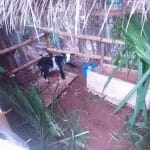By FarmersJoint in Livestock Farming 
Do you have pregnant sheep, goats or cows that fall sick before or after delivery? Saliva drips out of their mouth, they stop defecating or urinating, they find it difficult to stand or walk. The cause might be milk fever. Read to find out more.
Milk fever or hypocalcemia arises when animals are unable to mobilise sufficient calcium from the bones or diet when there is high demand for calcium, leading to low blood calcium level. Calcium is in high demand during late pregnancy and some days after birthing. For cows, milk fever mainly occur after birth but for goats and sheep it mainly occur before birth, during late pregnancy period (i.e. 6 weeks before birthing). Occurrence after birth isn’t common in sheep and goats.
Generally, milk fever can occur at any time from 6 weeks before to 10 weeks after birthing. Milk fever can also occur when certain compounds
>>>>>> [Read more…] <<<<<<
By FarmersJoint in Livestock Farming 
Urea molasses mineral block is a cheap supplemental block that is used to increase the nutritional qualities of low-quality feeds for ruminants (goats, sheep and cattle). It is a good source of protein, energy and minerals. Low quality feeds are cheap and abundant. Few examples include crop residues like wheat and rice straw, maize and sorghum stovers, beans plant and dry grasses. They are low in protein, vitamins, minerals and are hard to digest. Feeding these to ruminants result in sluggish growth, delayed maturation, longer pregnancy interval, poor milk yield etc.
But when you combine low quality feeds and UMMB, there will be increase in feed digestibility by up to 20 percent, increase in growth rate and increased feed intake by 25 to 30 percent. With UMMB, poor farmers don’t have to spend money on costly feeds like maize, soybeans meal, groundnut cake etc.
How to Make Urea Molasses Mineral
>>>>>> [Read more…] <<<<<<
By FarmersJoint in Livestock FarmingWhen it comes to ruminant farming, Nigeria still practice the archaic system of nomadic grazing and cut-and-carry system from bushes. In countries like Kenya, livestock farmers grow grass to feed their animals. Many Nigerians may find this laughable but it is far better than what we’re used to.
Growing your own grass means that you are sure that feed supply will be enough to meet your animals’ need. It is also hygienic. When I was young, we had some goats and I was the one that feed them. I normally went to bushes to cut grass. One thing that worried me so much is the eye-sores I normally encounter. I would always have to cope with the sight of human feces here and there. In fact, that was the main thing that discouraged me from goat farming.
Cattle grazing close to farmlands
Now that I have discovered
>>>>>> [Read more…] <<<<<<
By FarmersJoint in RuminantThe Tumbukiza method, which originate from Kenya, has been known to improve grass yield (by about 2x) and drought tolerance. The grass will grow longer into the dry season before the leaves start dying off. This means that feed will still be available during part of the dry season. But with irrigation, dry season will lose its significance.
Tumbukiza MethodCourtesy of FAO.org
There are 2 types of Tumbukiza method: The round pit type and the rectangular pit type.
Round Pit Type: Dig a pit 60cm in diameter and 60cm deep, leaving 60cm space between the pits.
Rectangular Pit Type: Dig a pit 60cm deep and 60-90cm wide. The length of the pit will depend on the available land, but it should be as long as possible. Leave 90cm space between pits. Rectangular pits that are long make more economical use of land and are easier to
>>>>>> [Read more…] <<<<<<
By FarmersJoint in Livestock Farming
Manure in Chicken Feed Sacks
Poultry litter is a mixture of poultry manure, spilled feed, feathers, and bedding materials (such as wood shavings, sawdust, peanut hulls, shredded sugar cane, straw etc). Some will be shocked to discover that poultry litter can be fed to ruminants like cows, goats and sheep. Some will wonder how beneficial it is and its health implication to both ruminants and man. In a short while, we’ll be considering all these.
Why Would Some People Feed Poultry Manure to their Animals?
I’ll be writing about 3 reasons why farmers feed poultry litter to their animals.
1. Disposing Poultry Litter is a Big Challenge: Disposing of poultry litter can lead to environmental pollution. If you are a backyard poultry farmer, you may not understand what I mean. Chickens can generate tons and tons of manure over a period of time. A single layer hen weighing
>>>>>> [Read more…] <<<<<<
|
Join the Forum Do you want to discover more great info like these?
Register for free and ask your question in our farming forum! Our knowledgeable members will have your questions answered.
FarmersJoint.com strives to maintain accurate and up-to-date information; however, mistakes do happen and we won't be held accountable for anything that result from the use of information provided in this site. If you would like to correct or update any of the information, please send us an e-mail. THANK YOU!
|

